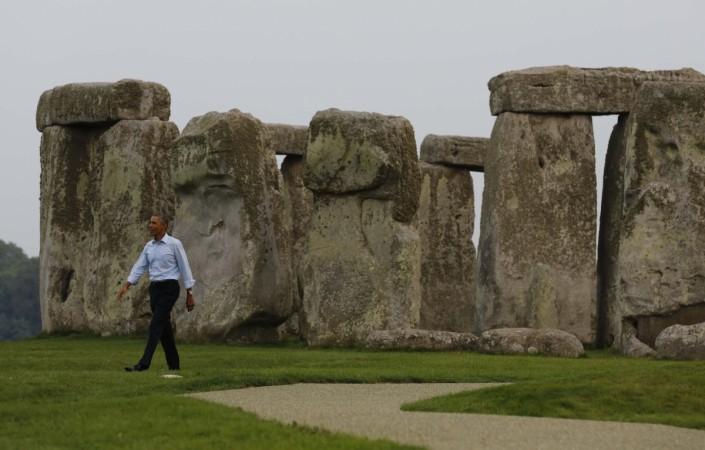
The UK's Department for Transport has announced a major plan to construct a 1.8-mile (2.9 km) dual-carriageway tunnel that will past ancient British monument Stonehenge. The move is to solve congestion in the A303 corridor by linking the M3 in the south-east and the M5 in the south-west that will help millions of people.
Stonehenge is a prehistoric monument located in Wiltshire, England, and has been declared a World Heritage Site by the UNESCO. It is one of the top tourist places in Britain, witnessing more than 1.3 million visitors annually.
Transport Secretary Chris Grayling announced the £2 billion scheme for the south-west on Thursday, January 12. He said the project would "transform the A303 and benefit those locally by cutting congestion and improving journey times." He went on to say that the scheme would "boost the economy, linking people with jobs and businesses with customers."
[READ: Stars merger prediction: Stellar explosion imminent in 2022]
"Our plans for the A303 recognise the national importance of the route and these improvements will bring real benefit to the region and local communities," said Highways England Chief Executive Jim O'Sullivan. "The public exhibitions will provide an excellent opportunity to explain further our plans and to hear feedback from stakeholders," he added.
The authorities have launched consultation into the tunnel highway scheme, offering the public the chance to share their views on the proposed project. The consultation will run until March 5 and the preferred route will be revealed later this year.
Government officials argue that the dual-carriageway tunnel will solve traffic problem at the seven-mile single carriageway stretch of the busy A303 that is just a few hundred metres away from Stonehenge. Some are of the opinion that the proposed tunnel will bring tranquillity to the World Heritage Site and attract more tourists. English Heritage and the National Trust are among those that have supported the move.
However, many fear that the tunnel could cause irreparable damage to the World Heritage Site. Andy Rhind-Tutt, Chairman of Amesbury Museum and Heritage Trust, has described the project as a "self-destructing time bomb" and historian Tom Holland has taken to Twitter to express his disappointment.
"This is terrible news. A tunnel under the #Stonehenge landscape wld be devastating archaeologically - & morally too," tweeted Holland.
I beg Conservative MPs - who, God knows, belong to a party pledged to conserving things - to vote against this desecration #StonehengeTunnel
— Tom Holland (@holland_tom) January 12, 2017
Stonehenge Alliance, a group that has been campaigning against the construction of tunnel under the heritage site, had earlier demanded a longer tunnel, saying that one that is less than 2.7-miles (4.3 km) in length could cause irreparable damage to the surrounding area. It has now launched a rant on Twitter in an attempt to stall the scheme.
Less remote than Orkneys, #StonehengeSecrets will be ruined by road & tunnel. Take a look at @holland_tom video https://t.co/M4GUyVqC0o https://t.co/AUgfGG21sY
— Stonehenge Alliance (@SaveStonehenge) January 10, 2017
Urge UNESCO to demand that the widened A303 must not cause further damage to Stonehenge World Heritage Site.... https://t.co/vjXHuPRkix
— Stonehenge Alliance (@SaveStonehenge) January 10, 2017
So, will the tunnel highway destroy Stonehenge permanently?
May be not as the government will leave no stone unturned to ensure the safety of the 4,500-year-old heritage site after all the public outcry, but there is also no guarantee that the site will not be disturbed. The fact is stones at the Stonehenge site are delicately placed and any movement of the ground can cause collapse of the lintelled slabs.
According to Stonehenge Monument, the Stonehenge would have collapsed long ago if restoration work wasn't carried out in 1881, the "first documented intervention to prevent stone collapse" at the site. The report said that even wooden scaffold was used to support lintelled stones from falling to the ground. Then stone 22 collapsed along with lintel 122 on December 31 1900.
Authorities may argue that the tunnel highway that past under the Stonehenge will not cause any disturbance to the site but one thing that nobody can deny is the fact that any movement of the ground in the vicinity can affect the stones that are precariously balanced and leaned against each other.
(Source: Government UK / Stonehenge Monument)








